Letters from Lodi
An insightful and objective look at viticulture and winemaking from the Lodi
Appellation and the growers and vintners behind these crafts. Told from the
perspective of multi-award winning wine journalist, Randy Caparoso.
Our best blogs of 2023 were all about old vines—which Lodi has more than anywhere else in America!
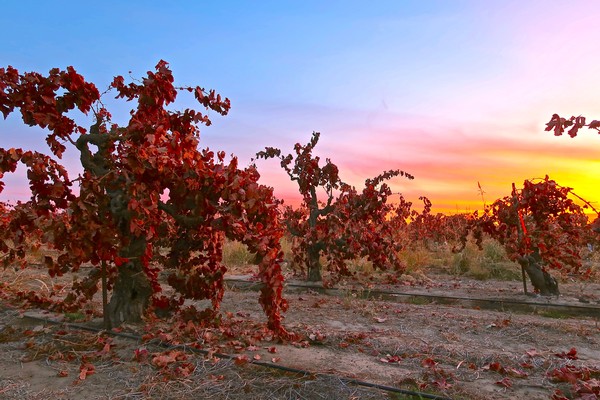
December look of own-rooted Carignan, planted in the sandy soils of the east side of Lodi's Mokelumne River AVA in 1909.
2023 will go down as the year when old vines finally got their due. No longer for just the outward beauty of these plants, their astonishing longevity, or the special character of their resulting wines, but also for their significance in respect, as the recently established (June 2023) Old Vine Registry puts it, to the current "planetary crisis."
It is the very adaptability of old vines to decades or even centuries of extreme weather, pest, and disease pressures that carry the "secrets of survival," according to Old Vine Registry, tantamount to the entire international wine community. "Big, gnarly vines," they write, "are significant reservoirs of biomass and carbon... they play vital roles in local hydrological cycles... their old, deep-and-wide root networks are inextricably bound up with and connected to the mycorrhizal networks that sustain, feed and protect our soils."
In addition, "old vineyards are also often full of clonal diversity and rare varieties... the genes of old vines can be studied, and old-vine material can be propagated for more resilient young vines."
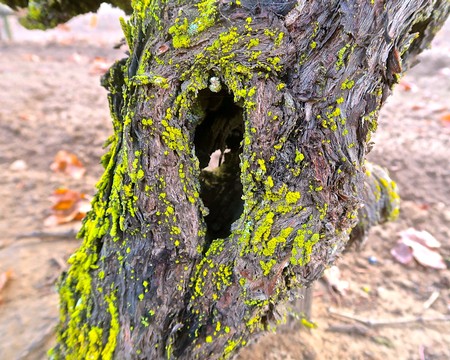
The hollowed trunk of Mokelumne River-Lodi Zinfandel is over 100 years old.
Lodi, of course, has been a haven of more acreage of old vines than anywhere else in America. A lot of it is happenstance. Whereas other regions committed primarily to commercially important grapes such as Cabernet Sauvignon, Chardonnay, and Pinot noir during the modern era (more or less, post-1960s), Lodi clung to its traditional status as "Zinfandel Capital of the World."
Zinfandel, as it were, is one of the varieties of Vitis vinifera possessing the highest percentage chance of becoming, well, "old vine." Mostly because it performs best as a free-standing spur-trained grapevine, which is most conducive to long-term biological health.
Hence, our own ongoing focus on the subject of old vines. It's what makes Lodi Lodi. Re a bevy of such stories over the past year...
Plain talk on the increasing mystique and value of old vines
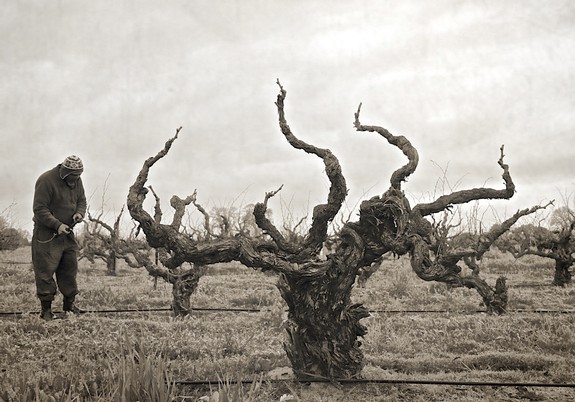
January 12, 2023
Seemingly everyone in the wine world—wine lovers, self-appointed experts and writers, sommeliers, and media “influencers” and the like—is now into “old vines.”
But why? Or, you might ask, what’s wrong with young vines—virile, vigorous vineyards planted with the knowledge of the latest technology, viticultural hindsight, and deep, deep pockets?
The answer is... it’s all good. It’s just that older vines, presumably planted during years when growers were not so smart or well-heeled, now deserve their due because, well, they’re old. Somehow they’ve survived years and years and slings and arrows of market fortunes and misfortunes, when the land they sit upon could have easily been converted into other usages—more lucrative crops or industries, houses, and highways, or of course, higher demand grapes. Read more.
2023 update on Lodi vineyards finally getting their due by being recognized by Historic Vineyard Society
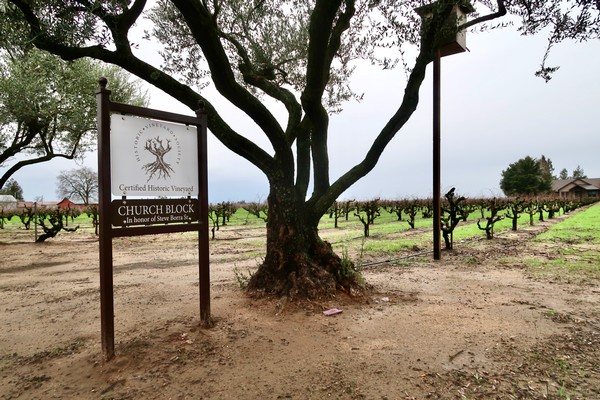
The Historic Vineyard Society-certified Church Block on Mokelumne River-Lodi's west side, in between January 2023 rains.
January 26, 2023
Long-overlooked old vines finally get their due
In France, plantings of old vines are called vielles vignes (pronounced "VEE-le VEE-nye"). In Germany, alte reben ("AL-teh RAY-ben"). In Spain, vina vieja.
In the U.S., as well as countries such as Australia and South Africa, the phrase on the lips of wine lovers, and frequently popping up on wine bottles, is "old vine." Read more.
Why old vines are more important than ever all around the world
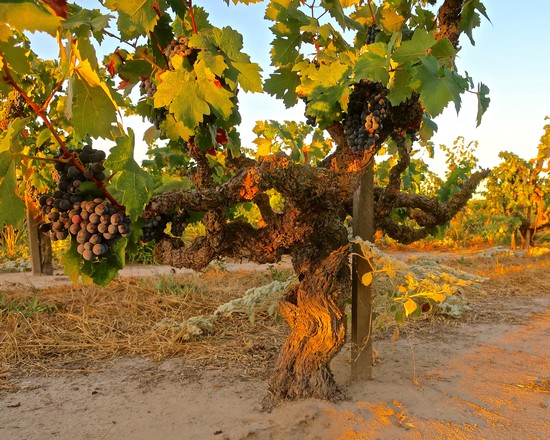
Monumentally strong, productive, natural-rooted Zinfandel, planted in 1901 in Lodi's Marian's Vineyard.
April 18, 2023
Everything You Wanted to Know About Old Vines and Why They're a Big Deal is the subject of the 12:00 PM Wine Seminar taking place during the 2023 Lodi Wine Experience Grand Tasting in bucolic Lodi Lake, Saturday, May 20, 2023. If you want to learn about old vines while tasting phenomenal wines made from vineyards anywhere from 80 to nearly 140 years old, you don't want to miss this event.
The concept of old vines is a big deal in Lodi because there are more plantings over 50 years old—our technical (if unofficial) definition of an "old vine"—in Lodi than any other wine region in California, thus the entire country. More than that, though, old vines have recently attained a cachet appreciated by wine cognoscenti all around the world. Read more.
Ten reasons why old vines are more important than ever to the international wine community
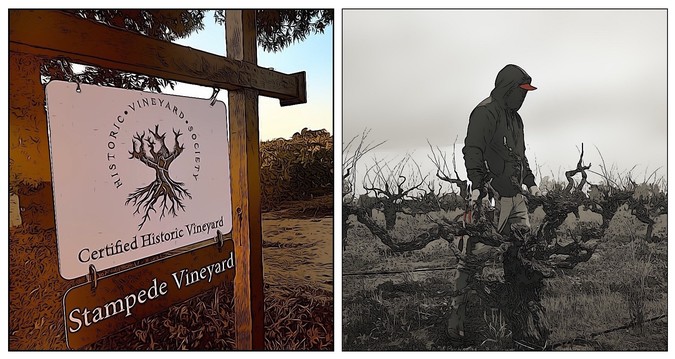
Stampede Vineyard in Lodi's Clements Hills AVA, certified by the Historic Vineyard Society.
April 24, 2023
In our continuation of Everything You Wanted to Know About Old Vines and Why They're a Big Deal—which is also the subject of our 12:00 PM Wine Seminar at the upcoming 2023 Lodi Wine Experience Grand Tasting in bucolic Lodi Lake, Saturday, May 20, 2023—let's drill down into more specifics on why old vine viticulture is more important than ever all around the world. Ten points:
1. Wines made from old vine plantings are prized for a certain complexity and depth of flavor. As the age of grapevines increases and roots grow deeper and more extensive, plants gain more access to nutrients and minerals in the soil, and to water during drought years. Older vines also develop thicker trunks and sturdier arms. It is not uncommon to see vines over 75 or 100 years old trained as free-standing "goblets" or "bushes" with arms that are longer or thicker than their trunks. This is unusual, in a sense, because grapevines are not trees—they are, fundamentally, climbing or creeping plants, but when they become older their fruit can be cultivated almost like that of trees or bushes while retaining a functional health not too different from plants allowed to mature naturally in the wild. Read more.
The global encompassing Old Vine Registry launches, with 53 Lodi AVA vineyards
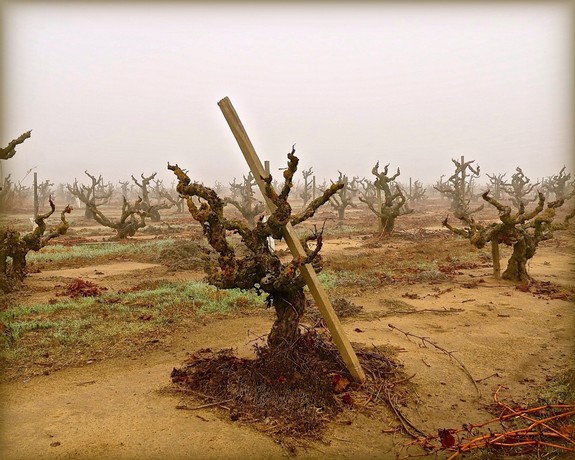
Marian's Vineyard Zinfandel, quintessential Lodi AVA old vines planted in 1901.
June 26, 2023
Today (June 26, 2023) marks the official launch of The Old Vine Registry (re oldvineregistry.org). This is a big deal. As it states on its home page, The Old Vine Registry is "the world’s first crowd-sourced global database of living historic vineyard sites." Its goal, is "to create the world’s most authoritative record of these vineyards in the hopes that through greater awareness and attention these vineyards and the wines they produce will survive and thrive."
In this morning's internationally broadcasted webinar announcing the website's debut, renowned British author and Master of Wine Jancis Robinson remarked on how The Old Vine Registry grew "out of an Excel spreadsheet started 13 years ago, and grew and grew until it became impossible to manage... we decided it should have its own website—one that is free and open to all and can continue to grow organically." Read more.
The art and zen of Lodi's old vines
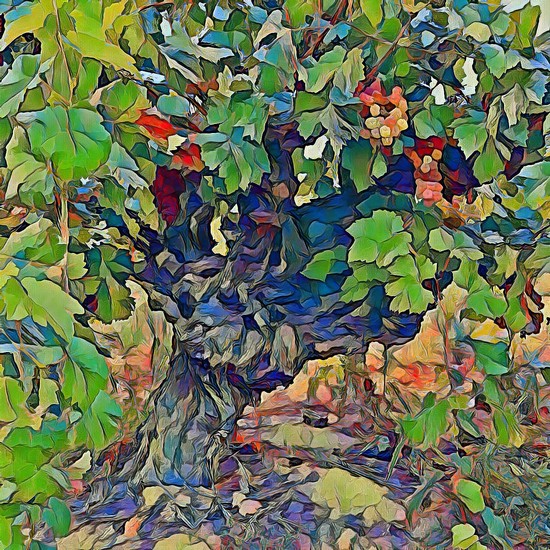
Alluring stained glass colors, like windows looking into a long heroic history, etched into this rendering of old vine Flame Tokay, grown along the Mokelumne River in Lodi's Clements Hills.
September 12, 2023
Nestled within the captivating landscapes of California's past lie a series of artistic windows into history, encapsulating a phenomenon of vineyards that have become more than just sprigs in the ground, but more like elements of the earth itself.
Here in Lodi, we call that phenomenon "old vines," which are not like any ol' vineyards. More like birthplaces of dreams, cradles of creativity, or canvases for endless inspiration. (See our recent campaign, Save the Old). Read more.
Tegan Passalacqua's latest Sandlands releases signal an abiding commitment to Lodi
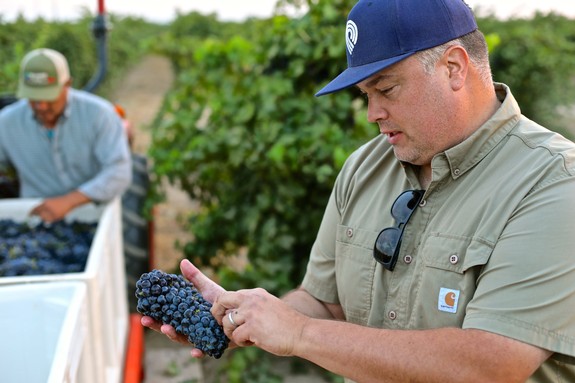
Tegan Passalacqua harvesting Zinfandel on the east side of Lodi's Mokelumne River AVA.
July 31, 2023
Last year (2022) marked Tegan Passalacqua's twentieth year with Turley Wine Cellars; most of that time was spent as this iconic brand's director of winemaking. 2022 was also the thirteenth vintage of Passalacqua's personal brand, called Sandlands.
Both Sandlands and Turley are significant to the Lodi appellation because of the two-way-street relationship between the brands and grapes. Turley, to begin with, remains the nation's most prestigious producer of California Zinfandel and Petite Sirah, and the wines are sold in nearly every American market from Hawaii to New York.
Sandlands is much smaller: As of today, production is up to 4,000 cases, pretty much a maximum for a one-man operation, run by a winemaker whose day job obviously keeps him busy. According to Mr. Passalacqua, the high profile of his exclusive brand is driven by the fact that 75% of Sandlands wines are sold directly to consumers, residing in markets across the country. 25% of Sandlands wines go into distribution, but only in California, New York/New Jersey, North Carolina, and France. Read more.
Monte Rio winemaker explains his puristic, terroir-driven approach to three Ancient Vines wines, from Lodi's oldest vineyards
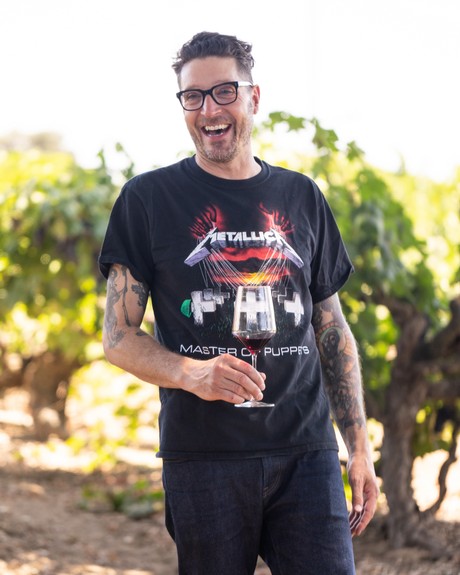
Monte Rio Cellars owner/winemaker Patrick Cappiello toasting to ancient vines in Mokelumne River-Lodi's Spenker Ranch, own-rooted Carignan planted in 1900. Leigh-Ann Beverley.
May 2, 2023
Monte Rio Cellars—a small, independent, handcraft label owned and operated by former longtime New York City sommelier Patrick Cappiello—has just released three Lodi-grown wines he is calling his "Ancient Vines" series.
Many winemakers exaggerate. Cappiello does not. These three wines are absolutely "ancient" by most of the wine world's standards; all fashioned from the oldest vineyards of their grape type in the Lodi appellation, planted and cultivated on their own rootstocks by the S family:
• Bechthold Vineyard—Cinsaut grapes planted in 1886.
• Royal Tee Vineyard (called "Royal T" on the Monte Rio label)—Zinfandel, mixed with lesser amounts of Carignan, Mission, Flame Tokay, and Black Prince, planted all together in 1889.
• Spenker Ranch (identified as "Jessie's Grove" on the Monte Rio label)—Carignan planted in 1900. Read more.
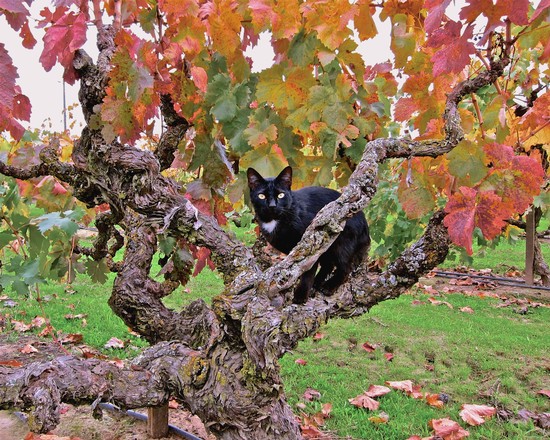
Ancient vine Carignan, planted in 1889, in Mokelumne River-Lodi's Royal Tee Vineyard.